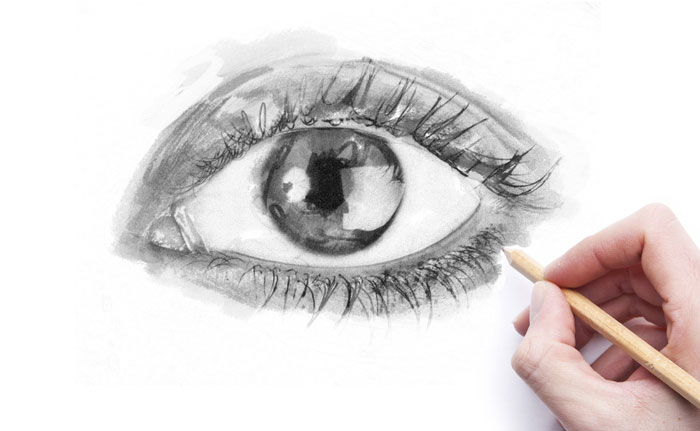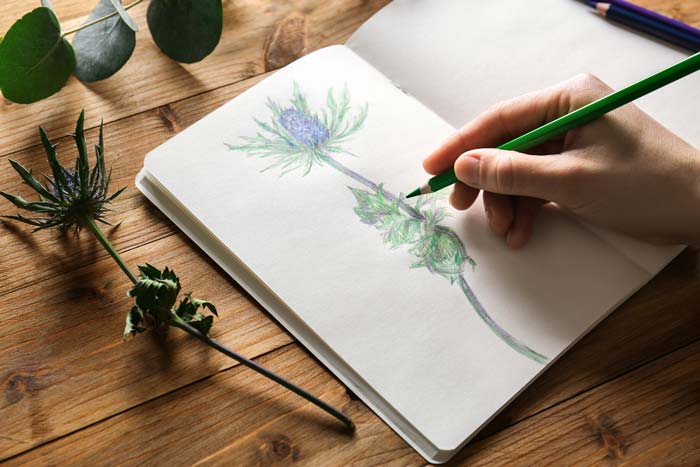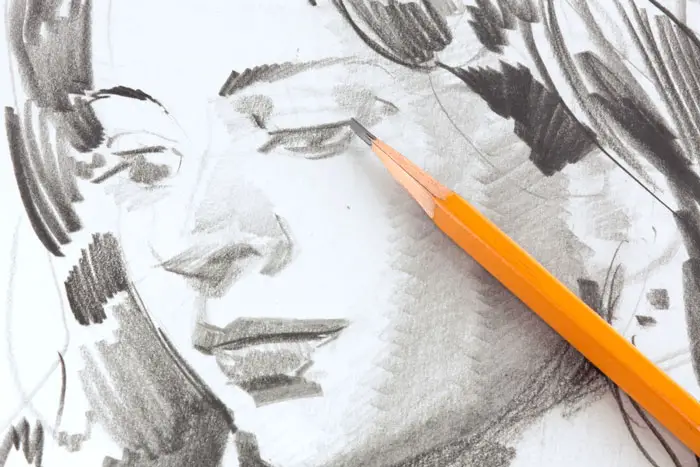If you want to improve, you need to exercise regularly.
Of course, you do. Nobody denies that. Regular practice alone is not enough, yet. There are both good and bad ways to practice.
My own learning experience to draw myself over the past few years has taught me a lot. You will go to tremendous effort to get the minimal reward. Train, and you can move forward much faster than you thought possible with less effort.
This is one reason I have so many doubts about the “10,000 hours” idea that has been around for a while. It says nothing about the form 10,000 hours of training should take.
Table of Contents
10,000 Hours To Master Or Focus On Drawing A Little Every Day?
I have concluded that effective practice is specific, focused, and thoughtful. Ineffective practice is vague and tortuous. He has no specific goal and, therefore, does not achieve a specific goal. Complex activities, like drawing and painting, require the synthesis of many different skills. Through non-purposeful practice, they are treated all at once. This leads to a significant improvement in each of them in a short time. Worse, it can be daunting in the long run and prevent you from fully exercising.
Find an effective way to practice the workout.

Recently I decided that I urgently need to improve my makeup skills. I’ve written some articles to determine what makes a good composition and how you can learn to draw. After deciding to get a better sense of design, I implemented a training program. This aimed at broadening the specific skills I possess thoughtfully. I mean an intuitive sense of proportion and spacing.
This article is about the kind of exercise I started to improve my drawing composition. Let’s take a look at the summary first and then I go on to expand on each point.
- Make the most of when you practice drawing
- Making drawing a consistent daily habit
- Schedule your drawing time
- Bring a sketchbook so you’re always ready to draw when you have time to spare
What Is An Effective Practice?
I had known my makeup was bad for a while, but I wasn’t sure what to do about it until recently. What I missed is an entry, a roadmap that you can follow if you wish. I think that’s the hardest part of learning yourself: knowing where to start first and then go from there. The lack of this roadmap leads to aimless wandering, frustration, and frustration.
This need not be. If you want to improve something, in my opinion, the basic steps are:
- Determine the basic skills you will need to practice.
- Identify a way to practice these skills independently from anything else – focus on each skill individually.
- Make an appointment with yourself and take the time to practice regularly.
Easy. Suppose you want to be able to draw more accurately. The skill you would need to practice would be to judge 3D shapes and translate them to 2D in the image plane. By building this skill as a goal, you can visualize the exercises around them and move on to regular, focused practice.
Of course, if you draw a lot, the drawing will become more accurate over time. However, if you practice this skill yourself and practice it regularly, purposefully, and with focus, your drawings will sharpen faster. The greatest skill you now have with this particular drawing and painting aspect naturally becomes part of everything you do.
Note that I didn’t include anything about setting goals in my three steps. For instance, “I will do a lot of doodles every week” or “I will practice this time every day.” The reason for this is because I’ve tried to set goals like this, and they haven’t worked well for me.

How To Create A Good Daily Drawing Habit
To become a skilled artist, you have to work every day and maintain it for years. Finally, professionals learn to criticize their work and focus on their weakest areas for improvement. But how does a beginner learn to see his mistakes?
The best way to achieve this level is to practice daily. How do you deal with this type of daily routine? Repetition is an important factor, but a state of mind also plays a role.
I want to share some tips on how to force yourself into your daily drawing habit. It will take weeks to get used to a set habit. Once you do this, drawing becomes a lot easier and more comfortable.
Plan A Schedule To Keep Practice Consistent
It would be best if you made time to paint every day. This can take 30 minutes or 4 hours (or more). The goal is to stick to this time each day so that you never avoid drawing.
You may have days when, due to unforeseen circumstances, you cannot buy time. If so, take your design to the next day. Or add extra time during the week to make up for lost drawing hours.
The goal of working on a strict schedule is to maintain your honesty. Every day you will be working on building an unconscious routine that will somehow happen whether you think about it or not.
If you lack willpower, I recommend Effect X as a study aid. The notecard scores with a 7 x 7 grid that contains 49 fields. Each box represents a day.
For each day you complete Drawing Time, check an X in this box. The idea is that if you can work consistently for 49 days, you have a habit that you don’t want to get rid of.
It is only possible to draw when you have free time. However, with this precarious planning, you cannot make steady progress year after year.
Organize Your Lessons To Improve Your Ability
It doesn’t matter what you paint in the beginning. If you didn’t draw a lot as a kid, you are probably terrible. And that’s cool!
The good thing about being a beginner is that you can draw anything and get better. If you draw lines for 30 minutes a day, your internet business will improve. But at some point, you need to focus on drawing and try to practice some skills.
Beginners rarely know where to start. Because of this, it can be difficult to jump straight into the drawing as there is so much to learn and no specific direction to walk in.
To cope with this, organize a small timetable that fits into the time available. If you only paint for an hour each day, you can gesture for 30 minutes and detail your figure drawing for 30 minutes.
When you’re first starting, do your best with your basics. Please take the time to draw in a fun way. However, this is not a targeted approach and will not result in the fastest rate of growth.
Create a lesson plan that alternates between different topics.
Bring Your Own Sketchbook Wherever You Go
There are useful guides on the Internet that will teach you the basics of drawing in Sketchbook.
Moleskine sketchbooks tend to be the most popular and easiest to take with you.
However, please read our guide on choosing the best sketchbook to find one that suits your goals.
Anytime you’re on a trip that disrupts your normal routine, Sketchbook can get you in focus. Even 15 minutes of drawing is better than nothing. You just want to stick with this mindset of getting a pencil down on paper every day.
Treat this little sketchpad like a scrapbook for fresh ideas. Be ready to experiment with things and don’t think anything is over in Sketchbook. You never have to show your drawings to anyone, and you have the right to practice them freely without any restriction or regulation.
Painting for 5 hours is way better than 1-2, and you’ll see improvements faster that will also affect your confidence.

Slowly Increase The Drawing Time As You Get Better
If you work full time, this won’t be easy. It is never easy to find time for something when life is already so hectic. But when something is essential, learn to save time.
You can see improvements if you only paint an hour or two a day. However, if you want to see bigger improvements, aim for 5-6 hours a day or more if possible.
Better to start somewhere than not. An hour a day is a better interaction than other beginners who don’t even have a schedule.
However, to bring your skills to a professional level, you need to extend your practice time somehow.
If your schedule is very tight, start slowly. Half an hour increase over a period of several months. This will allow you to adjust to the new schedule over time. It also gives you plenty of time to analyze your schedule and see what activities can be deleted.
The days of the week are usually hectic. So try to make up for this on the weekends. But don’t leave the weekends as the only drawing days as it won’t be enough.
When you have extra time, increase and measure your progress.
Self-motivation and perseverance will help you take the first steps. Learning art has nothing to do with inspiration, and it’s about working hard.
But if you stick to it and get used to drawing every day, you are guaranteed to see improvements.
Final Thoughts
Drawing can be a great experience. When you take a pencil and practice, you are ready to challenge yourself and improve.
Congratulations, you’ve already won. Your victory will bear fruit in time.
As you use these different training and consumption methods, you will see a leap in your skills.How do you train? What has helped you improve and improve? Let us know in the comments below.

